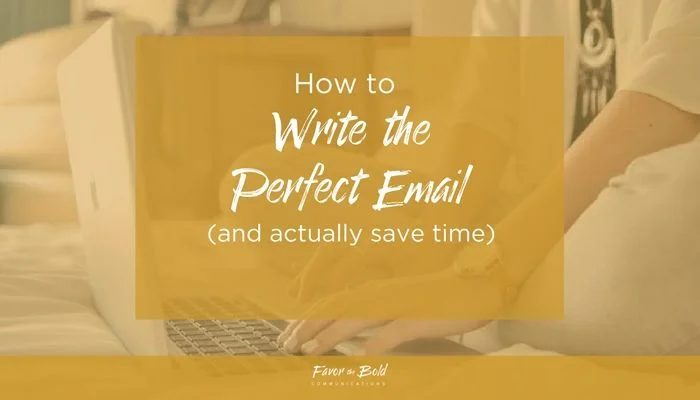Ok, so I know the title says “3 simple questions,” but that might be misleading. Because while the questions are easy, it's answering them that makes this entire post necessary.
In fact, answering them is so hard that people actually hire me to help them so they can get more ideal clients-- without sounding all salesy.
But since not everyone can work with me 1:1, I’m giving away my secrets and laying out how to go about answering the 3 questions that will make selling what you do effortless.
Here we go.
1. Know exactly who you’re selling to
Shocking, right?
Listen, I know you know this. I know you know you need to have a target audience. You need a customer avatar. You need to find your niche.
You know all of this, right?
Only, chances are, you’re doing it wrong.
That’s not to be a dick. I’m assuming you’re doing it wrong because for the longest time, I was doing it wrong-- and I teach this stuff!
Because when most people think about their ideal client, they’re thinking about things like demographics (busy moms, female entrepreneurs, gamers between the ages of 18-25) and values (purpose-driven small businesses, stay at home moms who are sick of the mommy wars, etc.).
And don’t get me wrong, that stuff’s important. You do need to know those things about your ideal client. But here’s the part you might be missing:
Your ideal client isn’t who you would love to help -- it’s who would love for you to help them.
That's the key to effortless selling: targeting the people who already want what you’re offering.
Take me as an example:
My ideal client is a feminist entrepreneur with an irreverent sense of humor who’s trying to turn her passion and expertise into a service-based business.
Sounds specific, right?
Well it isn’t. I meet hundreds of those a year and let me tell you: not all of them are ready to hire me.
If you really want to make selling effortless, you should ONLY sell to the people who are ready to hire you.
So, in my case, I realized that my real ideal client is all of those things, plus she’s 1-5 years in and wants to refocus (and often rebrand) her business. She’s ready to level up-- and wants a brand and communications that can keep up. She’s tried to do it herself and knows that she’s too damn close to her business to be able to see it objectively, so she’s ready to invest in professional help she can trust.
When I find people like that? Selling becomes effortless.
So think about it for yourself:
- Who would be easy to sell to?
- Who already wants what you offer?
- Who would you be thrilled to work with-- and who you know would be just as thrilled to work with you?
That's your real ideal client.
2. Know exactly what they want to buy
Listen, once you get that first step down, the rest is a piece of cake. Well, that might be an exaggeration, but it’s definitely easier than the first step.
Once you know exactly who you’re selling to, you need to figure out what, exactly, you’re selling to them. But, like the first step-- it isn’t really about you.
It’s not about what you offer. It’s not even about what they need.
The key to selling effortlessly is to sell what your ideal client already wants to buy.
This is where business owners often get it wrong: they sell what they think their clients need, not what their clients want.
To break this down, let’s go back to my biz.
I know that successful businesses have a strong brand, targeted positioning and clear, compelling messaging. I know the lack of those things are holding most small businesses back. And I know I can help them.
The problem?
They don’t know it. They don’t care about positioning and branding. They think their communications are just fine-- it’s their marketing strategy that isn’t working.
So they throw money at Facebook ads and social media strategy and PR and everything else to amplify their message-- but they don’t see results because their message blows.
But here’s the thing: unless they know their message blows and they want to fix it, it’s a complete waste of my time to try to sell to them.
Yes, they need what I’m selling, but unless they recognize the problem and are ready to invest in a solution, there’s no point in trying to convince them.
You can’t convince someone to buy a solution unless they believe they have a problem.
Of course, there are ways to educate your target market to help them realize that they have a problem-- but the people who need educating aren’t ready to be sold to yet.
So the more you understand who you’re selling to, the more you can understand what they want to buy-- and the easier selling becomes.
3. Know exactly why they want to buy it
Remember that piece of cake I mentioned? This is the icing on it.
(Fun fact: as a kid, I once snuck into our pantry with a spoon and ate half a tub of Betty Crocker chocolate icing my mom bought for a cake. Needless to say, she noticed. And now that I say it out loud, I realize just how gross it is that I did that…)
Anyway... this step is the kicker.
Knowing why your clients buy helps you know exactly what to say when you sell.
Most of the advice you hear about this revolves around understanding your audience’s pain point-- and yes, that’s important.
But it’s not enough.
Because think about it, we all have pain points in our life, but that doesn’t mean we’re always ready to pay money to solve them.
In order to be ready to invest in solving a problem, there needs to be a trigger that makes the pain point unbearable.
The more you understand what triggers your client’s pain point-- and pushes them to invest in a solution-- the easier it is to identify who’s willing to buy what you're offering.
Say, for example, you’re a dance instructor and your ideal client’s pain point is that they want to learn how to dance. If you dig in a little more, you could say that they’re embarrassed to go to parties because they don’t know how to dance without looking like an idiot (I’m speaking from experience here-- I look like I’m working out when I dance…)
While that embarrassment is painful, it’s not necessarily painful enough to make someone invest in dance lessons. There needs to be some shift or change that moves mild embarrassment to a unbearable problem that needs to be solved rightnow.
The better you understand those triggering events-- say, an upcoming wedding where the client will have to dance in the spotlight-- the easier it becomes to identify and attract the people who are willing to buy your solution.
And when you find the people who are already willing to buy?
Selling becomes effortless.











![How to boost your brand offline-- and get more business [Part 3]](https://images.squarespace-cdn.com/content/v1/5671d7a82399a31f114f4c55/1477565172008-2K7456WNHWYM99T12HTV/How+to+boost+your+brand+offline--+and+get+more+business.jpg)